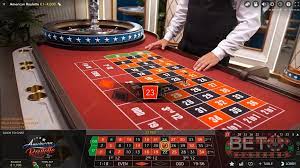Slot machines have become synonymous with the world of gambling, bandar togel drawing millions of players to casinos and online platforms alike. With their flashy lights, enticing sounds, and straightforward mechanics, these games have cemented their place as one of the most popular forms of entertainment. But what lies behind the glittering exterior of these machines? How did they evolve into the multi-billion-dollar industry we know today? In this article, we’ll dive into the history, mechanics, and various types of slot machines, offering a comprehensive look at their place in the modern gaming landscape.
A Brief History of Slot Machines
The story of slot machines dates back to the late 19th century. The first-ever mechanical slot machine, known as the “Liberty Bell,” was invented by Charles Fey in 1895 in San Francisco. The Liberty Bell featured three spinning reels with five symbols: horseshoes, diamonds, spades, hearts, and the Liberty Bell itself. Players would pull a lever to spin the reels, hoping to match symbols and win a payout. This game became incredibly popular, and soon other manufacturers began creating their own versions of slot machines, contributing to the growth of the gambling industry.
In the early days, slots were purely mechanical devices, but advancements in technology led to the introduction of electrical components. This innovation allowed for more complex features, such as multiple paylines and the ability to track the amount of money wagered. In the 1970s, the first video slot machines were developed, replacing mechanical reels with video screens, paving the way for the modern slot experience.
How Slot Machines Work
At their core, slot machines are games of chance. The outcome of each spin is determined by a random number generator (RNG), which ensures that the results are completely random and unbiased. RNGs are essentially algorithms that generate numbers at a rapid pace, and the number that corresponds to a symbol or combination of symbols is displayed when the reels stop spinning.
Slot machines typically feature a set of reels (usually three or five) and paylines, which are the paths where matching symbols can appear. The more paylines a machine has, the more opportunities there are for players to win. Players can bet on one or multiple paylines, with the chance of hitting a winning combination varying depending on the machine’s payout structure.
The Evolution of Slot Machines: From Mechanical to Digital
Over the decades, slot machines have undergone significant transformations. The most significant of these changes can be traced to the advent of digital technology. The first major shift occurred in the 1960s, with the introduction of electromechanical slots. These machines used electrical components in addition to mechanical parts, allowing for more complex features like the ability to track credits and payouts automatically.
In the 1980s, video slots emerged, taking the traditional reel-based machine and replacing the physical spinning reels with digital screens. This allowed for the inclusion of new features, such as bonus rounds, free spins, and animated graphics. Video slots became immensely popular because they offered more engaging gameplay and the possibility of larger jackpots.
The 1990s saw the rise of online casinos, and with them, online slot machines. These digital slots could be played from the comfort of one’s home, offering convenience and accessibility like never before. Players could enjoy the same excitement of traditional slot machines without having to travel to a brick-and-mortar casino. Today, online slots are among the most played games at casinos around the world, thanks to their variety, exciting bonus features, and immersive themes.
Types of Slot Machines
Slot machines come in various types, each offering unique gameplay features, themes, and payout structures. Here are some of the most popular categories:
1. Classic Slots
Classic slots are the simplest form of slot machines, typically featuring three reels and a small number of paylines (often just one). These machines usually have traditional symbols like fruits, bars, and sevens. They are favored by players who enjoy nostalgic experiences or prefer straightforward gameplay without complex bonus rounds or features.
2. Video Slots
Video slots are the most common type of modern slot machine, featuring five reels and multiple paylines. They often come with intricate storylines, high-quality graphics, and exciting animations. These slots can include numerous special features like wild symbols, scatter symbols, free spins, and bonus games that add layers of excitement to the gameplay.
3. Progressive Slots
Progressive slots are a type of video slot that offers a growing jackpot. A portion of each player’s bet is added to the jackpot pool, which continues to increase until someone hits the winning combination. These jackpots can sometimes grow into millions of dollars, making them extremely attractive to players. However, the odds of winning the jackpot are low, as the machine requires a rare combination of symbols to trigger the payout.
4. 3D Slots
3D slots represent the latest in slot machine technology, offering immersive graphics and realistic animations. These games use cutting-edge technology to create a visually stunning experience for players. The 3D effect makes the characters and symbols appear as though they are popping out of the screen, providing a more dynamic and engaging atmosphere.
5. Mobile Slots
With the rise of smartphones and tablets, mobile slots have become incredibly popular. These games are optimized for smaller screens and touch controls, allowing players to enjoy the excitement of slot machines on the go. Mobile slots often mirror their desktop counterparts, featuring the same themes and bonus features, but are designed to provide a seamless experience for mobile devices.
Popular Slot Themes and Features
The appeal of slot machines goes beyond just the gameplay mechanics; the themes and features of modern slots are often a major draw for players. Slot developers use creative storytelling, stunning visuals, and captivating soundtracks to create a fully immersive experience. Some popular slot themes include:
- Adventure: These slots often feature explorers, treasure hunts, or ancient civilizations as the backdrop.
- Movies and TV Shows: Many slots are based on popular films or television series, allowing players to engage with their favorite characters and scenes.
- Mythology and Fantasy: Themes based on gods, mythical creatures, and magical worlds are a staple in the world of slots.
- Pop Culture: Some slots are themed around famous celebrities, music bands, or iconic symbols from contemporary culture.
In addition to the themes, special features like free spins, expanding wilds, and interactive bonus rounds can enhance the gameplay and offer the chance to win big.
Conclusion: The Ongoing Evolution of Slot Machines
From their humble beginnings in the 19th century to the advanced digital slot machines we see today, slot games have undergone a fascinating transformation. Whether they’re played in a traditional casino, online, or on a mobile device, slots continue to captivate players with their engaging themes, innovative features, and the thrill of a potential win. As technology continues to advance, it’s likely that the future of slot machines will bring even more exciting developments and creative possibilities. For now, though, they remain a beloved part of the gaming world, offering an experience that’s both fun and full of potential.

